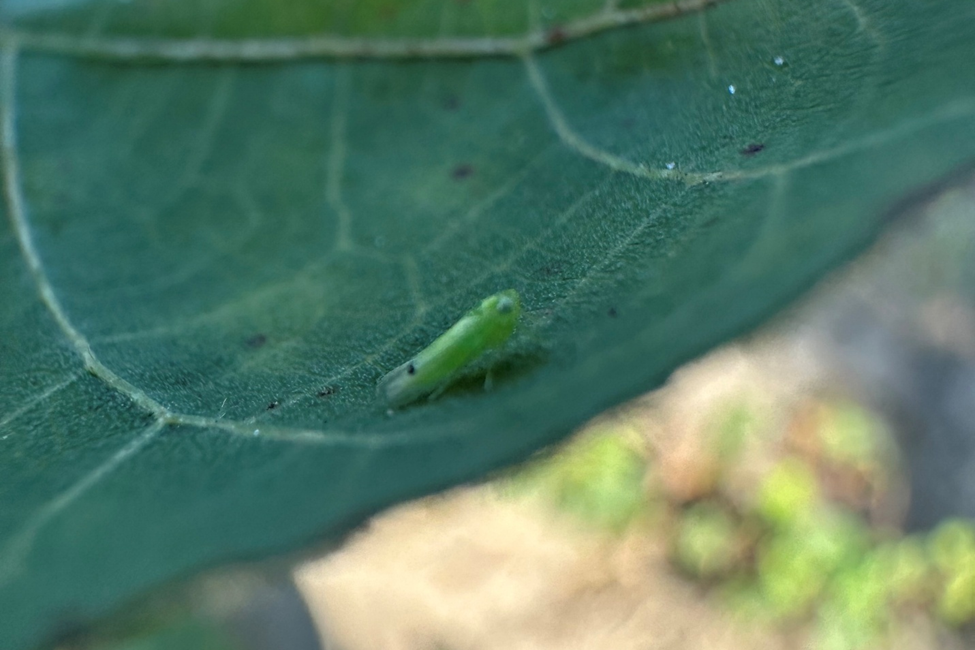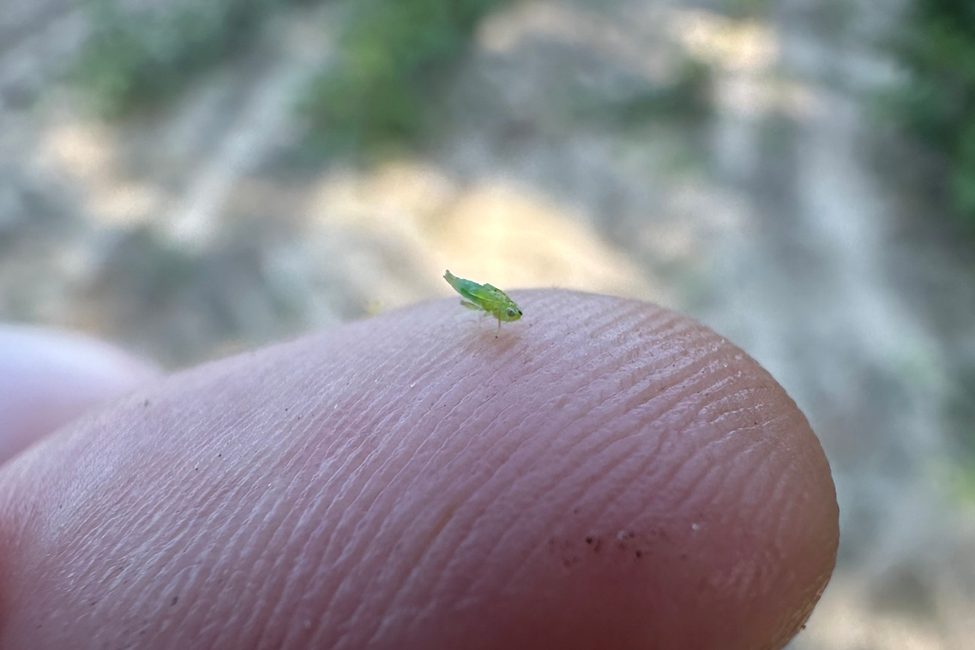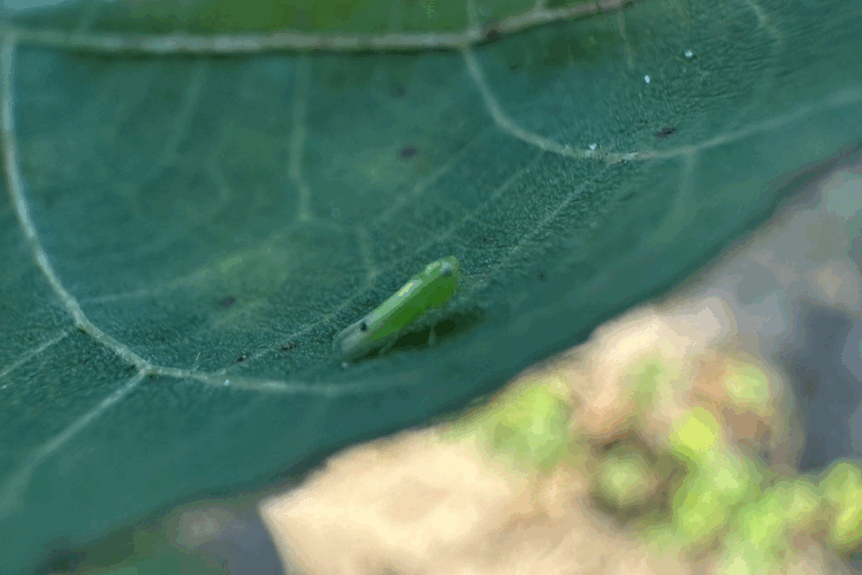
By Frank Giles
The cotton jassid, also known as two-spot cotton leafhopper, is an invasive insect from the Indian subcontinent. The pest has sparked concern in cotton crops and has potential to become problematic in specialty crops.
Where Is It?
The cotton jassid was first detected in the United States in Florida in 2024. The pest recently made headlines as it spread through more than 25 counties in Georgia after an initial find in July in Seminole County.
Why Is It Important?

According to a pest alert issued by the Florida Department of Agriculture and Consumer Services (FDACS), two-spot cotton leafhoppers feed on the lower surface of leaves, extracting the contents of the cells. This causes yellowing, reddening and then browning of leaves, characteristic of a syndrome called hopperburn, along with wilting and curling of leaves. The leafhoppers themselves are tiny, so it is likely plant damage will be observed before the insects themselves.
Damage can be extensive to multiple crops beyond cotton. Some of those crops include okra, sunflowers and eggplant. Yield losses may exceed 50% in some crops, given the right circumstances. Damage is reminiscent of that caused by vascular plant pathogens, but two-spot cotton leafhopper is not proven conclusively to transmit plant pathogens.
Stormy Sparks, University of Georgia Cooperative Extension vegetable entomologist, recently reported on SpecialtyCropGrower.com that the pest has caused extensive damage in okra.
“It really likes okra and tears them up. You get what’s called hopperburn,” Sparks said. “When you get big populations it looks like you hit it with herbicide. I’ve seen okra patches killed. The other vegetable that it reportedly really likes is eggplant. We’re going to have a close eye on our fall eggplant crops and see what happens there.
“It has a wide host range, but as far as I know okra and eggplant are the most frequently damaged vegetables. It may be a host preference or may simply be that these two plants react most negatively to whatever the leafhopper injects while feeding, similar to pepper and eggplant reacting to feeding by broad mite, which also has a very wide host range.”
What Should You Do?
Officials with FDACS and the Georgia Department of Agriculture (GDA) are urging growers to monitor for the pest and send samples in for identification. While tentative identification of the two-spot cotton leafhopper can be made in the field and laboratory using the combination of host damage and the black markings on the wing and (sometimes) head, authoritative morphological identification requires dissection and examination by a specialist.
Scouting methods are being developed by entomologists, but experience in the Caribbean suggests that sweeping with a fine net over (not through) the damaged crop can be a useful survey tool.
“We’re encouraging all Georgia cotton producers to check their crop to look for evidence of the cotton jassid, and if found, immediately contact your county Extension office,” said Georgia Agriculture Commissioner Tyler Harper. “GDA’s Plant Protection Division is working closely with University of Georgia Extension Service and the Georgia Cotton Commission, and I’m hopeful Extension entomologists will soon have effective treatment strategies for Georgia cotton producers to protect their crop.”
Cotton jassid samples should be sent in 70% alcohol, with identifiable plant material. Put the plant material, with a dry paper towel, into a secure clear plastic bag by itself, clearly marked “live insects.”
For information on submitting samples in Florida, visit fdacs.gov/DPIsamples or contact your county Extension agent.










